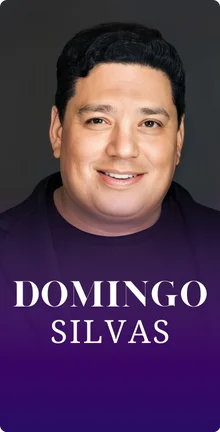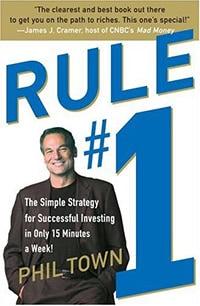
Phil, it is great to have you.
Stephan, it is a real pleasure to be here. Thanks for having me on!
Absolutely. Well, let’s change some lives here and talk about how people can invest like Warren Buffet. Because Warren is the quintessential investor that people look up to, and one of the richest people in the world. He got there not by chance, not by luck, but by a particular approach, which has served him for decades. What makes Warren different than all those other investors that end up losing lots of money?
Well when we think about investment as this really simple statement – you’re investing when you buy something low and you sell high, that is investing. Warren is one of the only people in the world who teaches people how to invest. I was very fortunate that I learned from someone who learned from him, that investing is pretty much different from what most people call investing. What most people call investing is diversifying across hundreds of stocks, across multiple markets, and in this massively diversified portfolio. What you are certainly not doing most of the time is buying low and selling high. For this reason, people do not get the kind of returns Buffet gets. That’s because he really only focuses on one thing very very well. And that is he finds a really nice, really good business, let’s say it is worth $10 a share, and he buys it for $5 a share. He continues with that discipline and is willing to wait for these opportunities that the market brings to purchase things when they are on sale. As crazy as it sounds, most people aren’t investing, Stephan, they are simply speculating that the market will go up in the long run. Whereas Buffet doesn’t care if the market goes up at all. He is going to make money regardless. That is what we like to do, and that is what we teach people how to do.
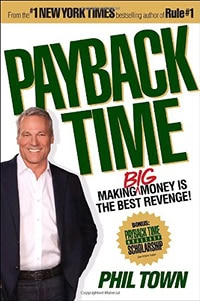
Right. It is essentially speculating or gambling when people are not applying tested methodologies for investing.
If you have to make the market go up to make money, you are not investing. You are speculating. It is like in real estate and you have to have the price of the house go up, or you are going to lose money on it. It is just pure speculation and gambling and the fact of the matter is the stock market has gone up throughout the last 140 years or so. It has gone up. But there are times when the market has gone sideways or down for such a long time, that if you invested at the beginning of this cycle there is one point in time where it was 26 years before you go even. Another when it was 19 years before you go even. What I really fear now is that baby boomers are going to be retiring soon in a cycle where the market may not be going up. It may be going sideways or down for quite some time. If it happens, it can decimate people’s returns.
And so what we want to do is introduce people to the idea that real investing is very low risk and high return when you do it right. When you buy low and sell high, you are going to make a great return. And if you’re buying low, your risk is very very limited if you’ve done your homework. So the key is to learn that it is possible, actually, in the real world, to find bargains on the stock market on a pretty regular basis. And that by finding these bargains, you are buying low, and if you just wait, the market will bring the price back up to where it should be eventually. And when that happens, you’re going to make money. And even if it doesn’t happen, we teach people to reduce the basis in your stocks. Again, the basis is what you actually have invested.
We show people how the right stocks reduce their basis automatically over a period of time so that within, I don’t know, 8 to 10 years of owning this company, it has liquidated all of your investment risks. In other words, you have taken your money off the table over a period of time by the company producing cashflow for you. And at the end of that time, you don’t have any risk in it anymore. You have it off doing something else. Let’s say real estate that has really good rent coming in over a period of time you’ve got your money back. We want to invest in a situation where the market just doesn’t matter. We want to invest whether it is up, down, or sideways. We are owning great companies that are producing cash flow, and those will take care of us for the rest of our life. That is actual investing. Not speculating.

You have a term called payback time, where you reduce that basis over time, and if it takes 8 or 10 years when you’ve got your money off the table, that’s the payback time. And that is one of your bestselling books.
Yep, and that is what that book describes. Essentially, investing the way private investors do it or venture capitalists do it, in a way that you’d invest if you were to buy a franchise or buy a private company. You’re not looking to sell it, you’re not going to flip it. You want this thing you produce cash flow, and eventually, your risk is gone. One of the examples we use in class is that I have half the class selling the company and half the class buying a company. Remember when we took you through that? You start to realize there is a certain price you are willing to pay and a certain price you are willing to sell at if you are business. We arrive at that price and we come to those numbers and very quickly people start to see that a very limited range of what you should be paying for something. When you are in that range, you have a bargain. Something with relatively low payback time. You’re going to have your money off the table in 6 years or 7 years or 8 years and then you are free of risk. There’s no market up and down that you have to deal with. You’re just taking returns from this company. That is basically Buffet 101.
Right. The number 1 rule of Warren Buffett, of course, is don’t lose money. People scoff at that and say that is ridiculous, you have to put money at risk. But there is a huge difference between where you are speculating and this approach where you have figured out the sticker price for a stock. Why don’t you explain how someone can ascertain what a fair price and sticker price for the stock is versus what today’s price is to see if the stock is on sale.
Sure. The first thing to recognize the way that Buffett looks at the market, versus how I would ballpark it at least 90% of your financial analysts and money managers, the way they look at the market. The way the rest of the world looks at it, the paradigm of the way that money is being managed today is called the portfolio theory. It started back in the 1950s, it started rolling. But in the 1970s it was a full-blown theory of how to properly invest. What the theory says is that the price in a stock market that has as much information available as this one does, that price and value are the same thing. In other words, smart people aren’t going to sell you something that’s $10, they are not going to sell it to you for $5. Also, smart people aren’t going to buy something worth $10 for $20. The price paid is the real value of the business if you know everything that everybody knows.
The price paid is the real value of the business.
And the fact of the matter is, the market, in order for that to be true, needs to be rational most of the time. About 85% of the money in the market is controlled by money managers. The idea is that they are very rational people and they are going to operate cold-bloodedly and more like computers than humans. This isn’t true. This theory now starts to kind of fall apart at the edges and Buffet has been saying this for 50 years. The market is anything but a rational place, it is absolutely loaded with emotions. These sort of twin emotions of fear on one side of being left behind if you are a money manager and everyone is doing better than you, and being stuck in some stock that you can’t get out. The fear of that, of losing your job that you’ve spent 15-20 years clawing your way to the top of this world, and now you are making millions of dollars and have a huge fear of losing their job, which is in the wide exhibition all the top in wanting to make more and more and more money. These twin emotions are battling each other out on the market every day.
Sometimes, like back in 2007, 2008, the stock market is going off the charts, straight up massively overpriced if you are buying. We saw it in 2009 when it crashed a year and a half later, and a large number of companies were out there massively underpriced. They were really on sale. The fact that this occurs is simply not recognized by modern portfolio theory. Everybody is very rational, everybody is doing everything with exactly no emotion whatsoever. And so what Buffet found is if you focus on buying when there is fear and selling when there is greed, you can make a lot of money with very very low risk. You are essential – imagine you are going to a garage sale and you see this fabulous mink coat that somebody once paid $10,000. This person, political correctness has taken over, they are just dumping it. They say “give me $200”, you give them $100, you put it up on eBay the next day and sell it for $500. And the risk that you have when you are buying something worth much more than for what you are selling it is – your risk is very very low that you are going to lose money, the probability that you will make money is very high, your rate of return is very high. So what it comes down to, to get back to your question, is the ability to understand what that company is worth as a business.
And this is what makes the stock market fascinating to me, it makes businesses so interesting an investment instead of say, trying to buy Picassos or gold or maybe even real estate in some cases. Business have a real recognizable value. And if you know what to look for, there is a handful of numbers you look for in determining this value. And the essence of that value comes down to one basic thing. That is the long term cash flow coming off of this business. What we call the owners’ cash flow or free cash flow. That is money coming off of this business that the business doesn’t need to grow and it doesn’t need to replace equipment, it is just extra cash. You can give it to the investors or put it into your pocket if you own it. That free cash flow ultimately determines the value of a business. The cool thing that Warren Buffet taught my teacher and he taught me and I taught you is that this free cash flow doesn’t exist in all businesses.
Free cash flow doesn’t exist in all businesses.
Some businesses are very hard to figure out when it comes to whether or not they are producing cash for all time. In the future, whether or not they will continue or be replaced by some better technology or maybe the management team is not good. Or whatever. There are a lot of businesses like that that we can’t really figure out the value on. Our job is to find a business where we can figure out the value, and look at the long term cash flow, and when we can’t. That’s what we are teaching when we spend three days on this. We come out of this with a pretty strong framework as to what cash flow looks like. We evaluate that cash flow in a number of ways including payback time. Am I getting my money back in 8 years or less? If I’m getting my money back in 8 years based on the current price of the business.
The second way is we look at what the value of that cash flow would be today. If someone were to get this 20 million dollars in cash flow over the next 10-15 years, if they knew that, what would they pay today? And we bring that back to a current price. And we’ve built some pretty cool tools that do it for us. We used to do it on Excel spreadsheets, but now we have a toolset that will do it. Once we have that, that is what we call the sticker price. That is what you mentioned before, this sticker price. What we think of as the real value of the business or the intrinsic value of the business, or maybe the retail value of the business. We call in the sticker price because we think of the sticker on the car window when you’re going to buy a new car. And you know you are not going to pay sticker. You gotta remember that it is just their asking price. It is legit, but it is the asking price. We want to get a better deal than that. We take that sticker price and we cut it in half. If there is enough fear in the market for whatever reason, maybe the financial industry is melting down and freezing up.
There’s a couple of mixed metaphors for ya. They screwed up and taking the entire stock market down with it. Now there is this company like Chipotle Mexican Grill, or a t-shirt company like Gildan that there is nothing going wrong with it at all. It continues to produce cash flow, it is going to produce cash flow in the future, and there is this unrelated event going on that knocked the price down to 50% or better, below the sticker price. That’s when we want to buy it. That’s what we think about value. The key thing being that in our world, price and value are definitely not the same thing. When there is great fear in the market, price can become substantially lower than the value of the company. Warren Buffet’s teacher is a guy named Ben Graham who kind of wrote the book on this in the 1930s called Security Analysis and then he followed it up with a book in 1949 called The Intelligent Investor.
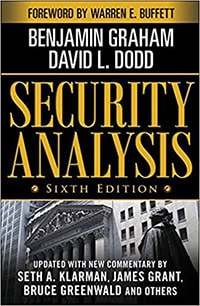
Those two books make up the basis of what we call value investing. And that is to understand that the market fluctuates between greed (everything is great, nothing can ever go wrong, everyone is paying stupid prices for companies) and then swings to the opposite pole, which is fear that the sun’s not gonna come up tomorrow. If you are patient, then the market will swing to that fear zone, and you’ll have fantastic companies that you’ve spent some time learning about, they’ll go on sale, you’ll know what the value is because you’ve prepared yourself to know. You’ll buy them on sale, and then you’re done. Then 5 or 6 years later you can sell them when they become overpriced. That’s the essence of this kind of investment structure or strategy that Warren Buffet has been teaching for 50 years. The most astonishing thing about it Stephan is that people don’t teach it, they don’t put it out there. It is not taught in academia, it is not taught in the schools, and that’s always been the greatest mystery, I think, of all.
Right, and I remember one thing you taught that was a critical piece to this, that you have to find that event. What made it go on sale? Was there some sort of internal conflict, or some PR fiasco that caused it to go on sale? If you can’t find it, don’t invest.
Exactly.
It’s not on sale if you don’t know what the event is.
For beginners doing this – there can be companies who go on sale where there is no event but those are much harder- I laugh about Warren Buffet having a box on his desk, he literally has a box on his desk that says “too hard”, and those kinds of deals are too hard for us. Although they may be on sale, we don’t know for sure, and because we know for sure the rules of our strategy of investing require that there be fear in order for this company to be on sale. That is a fundamental given, an axiom if you will about this style of investing. We learn what that event is. For example, the t-shirt company that I mentioned before, Gildan. All the people at universities and everybody who has a t-shirt that says Gildan on it, it is probably a Gildan shirt. These guys dominate the market, they have about 30% of the market. Great company. And they are very rarely on sale.
But when the Arab spring came up a few years ago, there was a lot of fear in the cotton futures pits that the Egyptians weren’t going to harvest cotton because of the revolution. And so, they started bidding up cotton prices in anticipation of losing the cotton crop in Egypt. Cotton prices went from 85 cents a pound to 2 and a quarter. It became front-page news that Gildan’s stock prices were dropping. These things just jump out at you once you start to get yourself in the game. They were saying, “look, we’re going to have a bad year in cotton at 2 and a quarter a pound and not make any money. But I know that it’ll square itself away in a year because Georgia will plant cotton and it’ll come back down.” It’ll be a one-year problem. The main thing, Stephan, is that we are looking for an event that is relatively short term. Long enough that it creates a lot of fear among people who don’t hold stocks for a few long time, which is 95% of the money in the market is relatively short term invested.
And but it has got to be not so long that it creates a lot of uncertainty about when it is going to square itself away. So this event with the cotton prices, we knew it would square itself up in a year or two and that we could buy this company at a super discount to its real value, and eventually it would be fine. We bought that company at $15 a share, and within a couple of months it was back at $30, and within a couple of years, it was at $60. So that’s how you end up with these wonderful rates of return. Again, what’s our risk there? It was a fabulous company, and they controlled their market, this was a short term problem, and the return is phenomenal. I really think there was a very little risk on this investment. And that is the basis of it. You’re right, the event thing is huge, and we teach our students what events look like.
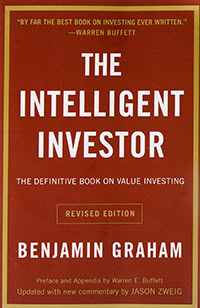
And there also is this concept of buying wonderful companies, and acting as though you were buying the whole company even if you were buying just a few shares and you plan on holding onto those shares for at least ten years. What makes a wonderful company, and what’s the process for understanding how a wonderful company is?
We think it is a really simple process, actually. It starts with really understanding the business you are getting into. In other words, if we look at an event starting up, like let’s say this cotton thing. We look at the first question – am I capable of understanding this business? Can I figure out a cotton t-shirt business? Can I figure out a burrito business? There are businesses I just can’t figure out. They are just too hard. So I am going to limit it, especially when I’m starting, to a handful of businesses that I’m capable of understanding. When I just started out, I was looking at motorcycles, because I used to rebuild Harley Davidsons. So I felt pretty comfortable around the motorcycle market, you know?
People who get started are comfortable with real estate and they start looking at real estate investment trust type stocks. So you find an area that you are already comfortable with that you feel are capable of doing business with and so you do your reading on the business and how it works. You can figure it out. It is not rocket science. Then the second piece of this is that the business needs to have some sort of durable protection against competition that is intrinsic to the business. It’s functionally part of the way the business works. The one that Gildan has, the t-shirt company, they are the low-cost producer of those t-shirts in the world. They have a position of no matter how low prices go, they are making money when nobody else is. That gives them a great deal of protection, which is a durable competitive advantage.
Another good example I think is a railroad. They have railroad tracks that run from long beach to Chicago. And if you are going to compete with these guys, you are going to have to put in railroad tracks that go from Long Beach to Chicago, and there is no way that you are going to get the right of way through all of these built-up cities to get the railroad tracks in there. You’re looking for something like that. A business that doesn’t just compete based on some commodity that it has. It has a durable competitive advantage. We find that there is really only about five of those. A couple of examples would be that some companies have secrets that protect them. Coca Cola has trade secrets that it defends. And then there is a switching – we call these moats, by the way, like the big water-around-the-castle moat – there are companies that have switching moats. Like Microsoft, once you’ve embedded Windows into your computer systems, all throughout the company, you’re pretty much stuck with Windows because you don’t want to switch over to everything else.
So there are brand moats, and pricing moats and toll moats. We explain those so that when you are looking at a company, it should be really obvious. And if it isn’t obvious, put that in the too-hard box. Now if we look at something like Chipotle Mexican Grill. These guys have built up a brand moat of natural, healthy, integrity in how the food is raised, and then we’ve got that e. Coli scare that throws the moat into question. It’ll come back, but basically the structure of the business is this concept that makes it durable. We’ve gotta have that. And then the third thing that we’d like to have is we’d like to have a management team that really has a good set of values, that has integrity, they are a good set of people. If you look at Gildan and Chipotle, they’ve got great management teams, and that is really important to us.
It is really important to know your values and buy companies that reflect those values onto the world.
Part of that I think is something we’ve learned from Buffet is that it is really important to know your values and buy companies that reflect those values onto the world. Buffet doesn’t have companies that do smoking, because he’s completely against smoking, so he doesn’t buy smoking companies. So I’m sure there are a lot of our listeners that have mutual funds that are equally against smoking, they are teaching their kids to not smoke cigarettes, and yet by owning a mutual fund, they almost certainly own a company that makes cigarettes, because mutual funds own all these companies. And that means essentially in a weird sort of way, we become hypocrites. We say, “Look, kids, don’t buy cigarettes”, but at the same time mom and dad own a cigarette company or own at least a share of it. And it is pretty hard to say that it is not hypocritical to tell your kids to do one thing while you own the business that does the other thing.
So, I really am encouraging to tie their values to their investing and vote with their dollars for what kind of future they want to see in the world. For example, Warren is pretty old school and he loves Coca-Cola, and bought a big old block of Coca Cola stock. Warren says “I drink Coke because it makes me smile” and people ask him “But what about all the sugar and diabetes and obesity and Coke is out there and he says, “well, here’s the thing. I went to Whole Foods and I didn’t see anybody smiling at Whole Foods. Coke makes me smile, so I like it. That is just the way it goes”. On the other hand, I’m looking at this and thinking, I’m not a big fan of sugar. And I am trying to cut it out of my diet as a discipline. I look around and there is just sugar everywhere. I am not going to get behind the countries that promote that. I’m behind Whole Foods. So if Whole Foods goes on sale, I’m a buyer. If Coca Cola goes on sale, I’m probably not going to buy that company.
I think that when you bring your values into play, this idea of investing is just about the money goes out the window. Believe me, there are a lot of guys I disagree without there, Jim Kramer is a guy I know from doing stuff on CNBC. And Jim totally disagrees. He doesn’t think you should bring your values to the money game. I think it is crazy not to. When you vote with your dollars you are having a tremendous impact on how you spend your money and where you invest it on what the world is going to look like in the future. If you don’t care, put it anywhere you want. Buffet cares and he’s putting it in hamburgers and Coke. I care and I’m voting for Whole Foods and that just makes it an interesting game that you are out there supporting something you want to see in the world.
When you bring your values into play, this idea of investing is just about the money goes out the window. Share on XYeah, that’s amazing. So to recap, there are the three M’s you teach us in the workshop and in the book for that matter. The Moat, the Meaning, and the Management. So we have to understand what the durable competitive advantage is, the moat, that separates the company we are looking at that hopefully is a wonderful company, that insulates it from the competition and prevents it from getting attacked by the competition. Those 5 moats are the secrets moat, the switching moat, the branding moat, the pricing moat, and the toll moat. Some have multiple moats that are protecting it, some only have 1. If they don’t have any, they aren’t a wonderful company. There is meaning there, meaning for us. It might be a wonderful company for somebody else but it is not a wonderful company for us because of our values, because of our areas of expertise and so forth. You have us go through this three-circle exercise to find out what is within our meaning. Then finally management understanding who is running the company because there is knowledge asymmetry. A lot of people buy stock without knowing who is the CEO and what do they stand for, what are they doing in the world to make the world a better place? What about the various vice presidents? What about the board of directors and so forth? Many people are investing without these basic fundamentals. So moat, meaning, and management. And then if you could kind of describe the three circles for our listeners?
It is a really easy exercise and it came from the guy who wrote Good to Great, a Stanford professor whose name escapes me right now. Do you remember by chance?
Jim Collins.
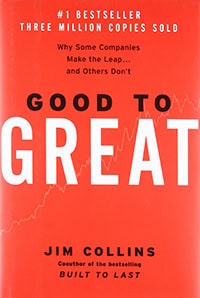
Collins. Good to Great. Great book. So Jim was writing about what made companies from what makes a good company to a really really great company. And what he found over and over again is that the management team sat down and went over what they call the three circles exercise, which he sort of created. And essentially I started to realize when I was reading this book that it would apply perfectly to what we do as an investor. What he talked about was that the management team would find out what they are passionate about doing with their lives, what were they able to be world-class at? What were they so talented at as a company that they are able to be world-class at? And the third circle is how would we make money doing this? By focusing on these three areas: the passion of the people, the talent of the people or the company and focusing on where they were going to make money is that they came to an intersection of those three circles of a product that would get them all on the airplane so to speak and get everybody behind it.
Jim wrote about how this could be used as an individual. He thought about his wife and these three circles and said “Hey, I think I’m really a talented runner and athlete, and I have a huge passion for the triathlon. If I were able to win some of these triathlons, the money would come. I think I might go for it”. And after a little exercise, she went off and won the Iron Man, which is just insane, and we talked about another guy, a Cal-tech physicist who would be in a class of 20 people, who was very good, obviously, PhD in physics in that physics program. But he realized there were a few guys in his class who didn’t even crack a book. They just got it. They could just put up the answers like Good Will Hunting type of guy, you know? He realized if he were to go into physics, he would be competing with a couple of those guys who were coming out every single year, a couple from MIT, a couple from Cal-Tech and it would be impossible to compete with them. He wasn’t as good at this as they were. So he shifted his major to applied physics, where he could be at the top of the game. I looked at this and said, “as an investor, what am I looking for?” Something I really connect with.
If I made a big list of things I’m passionate about doing, it might be things like there’s motorcycles on the list because I love riding motorcycles and fixing them up. And then I look at where am I talented, and I’d have another list of things. I’m talented at building bikes. So I can build a motorcycle. If I look at the money circle, looking at things where I make or spend money, we could see I’m actually making money around motorcycles, I built a company around motorcycles in one point in time. I’ve got all three circles. So motorcycles become a focal point for me as an investor. Then I look at the set of tools that we have and I pull out the industries that are around this concept of motorcycles. Then we find out I’m looking at companies like Harley-Davidson, but also like the guys who make the Polaris, and into RVs, and from that you are into cars and trucks and it just expands out from there. And you’ll find that there are – just by focusing on those three circles-you’ll find that there are tons of companies for you to look at, some of which might be on sale now. So three circles is really really fun, and we do that in the context of one more thing.
People who invest the same way that I invest, who are looking at meaning, moat, management, and are looking at the value of the business the same way.
You’ll remember-we also recognize as we are started off as novice investors, we are not going to have the confidence of a Warren Buffet. We know we are not going to be able to just go and invest in all of our money and just be comfortable about it because we just learning this thing. It is going to take us some time, it is going to take a while to learn how this really works and that we know how to do it. And there’s a shortcut we talk we talk about, and that is to look at what of some of the best investors in the world are doing, what are they buying right now? In other words, people who invest the same way that I invest, who are looking at meaning, moat, management, and are looking at the value of the business the same way, if they are looking at a business right now, that might be a really great tipoff for me as a place to start looking. If I could find a group of business that fall within my three circles and those businesses are being bought by some guru who does rule one style investing, then that is a tremendous leg up when we are getting started. We do this whole exercise were you end up with a number of companies that are specific to you, and yet really good investors are buying them right now, indicating they might be on sale, then we take those through the whole 3M process and then finally 4th M, which is margin of safety – making sure we know the value of the business and whether it is on sale or not. And then we have you guys come and make a presentation on it. And the results are just stunning of what we get in just a day or so. Pretty cool. Did you enjoy that? Was it fun when you did it?
Oh yeah, I had a ton of fun. I did pretty well too, I got kind of through several rounds and was thinking, “Hey, maybe I can get up on stage”.
Well, we have a $1000 first prize for the winner of this thing, and $500 second prize, and $300 third prize. And the people who win, very few people who attend these things have done anything like it before, and you mention you had several stages to win, win, win, and almost get to the top. And people who win it have done a really remarkably good job. Unfortunately, we can’t have everyone up there, I wish we could, because there are even better presentations that don’t make it. Yours I think was a really really great presentation that unfortunately didn’t make it to the front stage. But it could have. And I think had it made it there you might have won the $1000. And the cool thing is these are novice investors. And in just the 24 hours, standing up in front of 3 or 4 people for 10 minutes that could pass muster at a hedge fund manager conference. It is pretty amazing how quickly you can get to it.
And I was a novice investor, even though I have invested before, options trading and so forth, I’ve consistently lost money at options trading. In fact, if you add it all up, I’ve lost around a quarter of a million dollars, which is pretty painful. So, that’s a hard lesson. It is much better to have the knowledge and the structure you offer through rule #1 instead of having to wing it through various point solutions and trying to integrate it all into an overall strategy. It didn’t work for me, so – I’m very happy having an underlying structure that makes sense that aligns with my values, aligns with what is important to me, and is a long term play, and not trying to play the timing of the markets and so forth, because that is just crazy.
I am reminded by what Charlie Munger said. If you don’t know who Charlie Munger is, he’s about 92 years old now, he’s been Warren Buffet’s partner since the 1950s. He’s compounded money I think at 22% a year for 50 some years. He’s a tremendous investor. And Charlie was asked by the BBC about 3 years ago “what’s the key to investing?”. And he said, well, it is pretty simple. You have to be capable of understanding the business. It needs to have this intrinsic characteristic that makes it durable. You need to have management that you trust. And you want to have a margin of safety. He says it is amazing that people don’t teach this. He says that people don’t teach this because it wouldn’t take more than 1 day to learn it, and what would you learn the rest of the semester? I thought that was pretty cool.
You have to be capable of understanding the business.
Yeah, that’s great. So you have got to tell us now, the story of – you ended up hooking up with an amazing mentor, but you almost killed the guy on a rafting trip. So let’s share with our listeners the story of that.
First off, I had no idea of investing in 1980. I had been a river guide for almost 10 years in the grand canyon. I was living up in Parks, Arizona in a guide house, or in a teepee. And freezing my tail off in the wintertime. I had done that for a long long time. Traveled around off-season and stuff, but basically was being a guide and I had come from a blue-collar family. I had no idea about making money, and no real interest in it. In 1980 I took the trustees from Outward Bound down the Grand Canyon in really small rafts and we got down about halfway down, this is about a 2-week trip. We got down to a rapid called Crystal, where the water moves, at that point in time I think it was around 30-40,000 cubic feet per second and it goes straight into a cliff and turns right and goes down about 35 feet. And in all these trips I’d made in the Grand Canyon, I’d never been anywhere near it.
Well, I’d been near it, but not in that hole, it’s just a terrible hole. You go in there, and you can easily die. And people have died whose boats have gone in there. We avoid it like the plague. On this trip, we were paddling these boats, so I could steer it, but I couldn’t power the boat, so I had the crew do it, so it was all these Outward Bound trustees, and so we slide down toward this rapid. I say to these guys “When we pass this rock over here, I want you do paddle like your life depends on it, we are going to hook on to that eddy and it’ll take us around this hole.” The guys are really nervous and we start paddling and we couldn’t catch the eddy, the boat just wasn’t being driven hard enough. The current caught us and it was taking us into this hole. We went up on this – about a twenty-foot wave, on the edge of this thing, to our right was this dropoff, 35 feet, it was looking really bad, and straight ahead was a wall with all the water smashing into the huge wave. I yelled at the guys to just drive the boat and they kept us going around the edge of this hole and they hit the wall of water. It skidded the boat sideways and down the left side there was a ramp of some sort underneath there that didn’t just drop off, it was kind of a ledge.
We went down that like a ride out of Disneyland. And right around the hole. It was just the slickest thing ever. Nobody that I’d ever heard of had gone anywhere near that. It was like this hidden little run around the left side. We got out onto the beach and one of the guys went out and threw up. It was that close to a total disaster. And this other guy got out of the boat and gave me a bearhug and said “Look, you saved my life”, and I sort of laughed like “yes I did, I did it all on purpose”. And he said, “Look, I want to teach you to invest”. At that time, Stephan, I had no interest in it whatsoever. It was like teaching me to fly to Pluto. Because I didn’t have any money, I didn’t have any knowledge of investing, I didn’t know anything about it or know anyone that ever did it. And he said, “Look, just come out and visit me in La Jolla sometime, and I’ll show you what I do”. And he had become a self-made millionaire doing these exact techniques that we teach. And he had learned from guys like Warren Buffet and Ben Graham.
I said “Okay,” and forgot all about it until that winter when I was cold and thought “Oh yeah, I should come visit him in nice, warm, La Jolla, California”, so I went out there to sponge off this guy for a couple of weeks. Next thing I knew, I was an apprentice to him for a year, how to do these techniques. Then I went on my own with about a $1000, and I built that up over the course of 5 years by helping other people invest their money as well, I used some leverage there, and I made, I think I had a million and a half dollar at the end of five years, which was better than my goal. And from there, I continued to develop that into a pretty good sum of money. I started writing about it, eventually, and speaking about it publicly. And a few years ago, people kept saying “go deeper with us, let us really learn this stuff.” So, we started doing these classes, I think we’ve done 12 of them or 13 of them so far. We have people come virtually from all over the world to spend 3 days with me, I teach the class myself. We have a bunch of our students like you, we hope we can get you out to one of these soon to help coach them, we have 20 or 30 coaches show up, and about 200 students we limit the class too. Everybody comes into Atlanta, and we focus for three days of intense training, and I hope you enjoyed it as much as we did because we love teaching it, I’ll tell you that.
It was incredible. I can’t tell you how excited – I was empowered to make lifetime changes to my investing approach, to how I build wealth – it was such a gift. Since we are talking about it now, let’s share the gift with all of our listeners. So – I had mentioned at the beginning of the episode that the transformational investing workshop is free. I paid over $1000 to attend, totally worth it. But all of our listeners will be able to attend it for free. They’ll have to pay for their own travel to get themselves to Atlanta, but that’s a small price to pay for the massive value you’ll get over the course of three days. There’s a particular landing page that listeners would go to partake in this offer, and that is getyourselfoptimized.com/ruleone. So go to that landing page, getyourselfoptimized.com/ruleone, and you’ll be able to sign up for the workshop. So any other thoughts about the workshop, how they should prepare, should they read both of the books, do they need to have any investing experience?
Well first, I’d be really happy if you don’ t have any investing experience because you probably have experience in speculating. I’d rather you not. But if you do, that’s okay, you can come anyway. We love it when people come in and they’ve never invested before, it’s awesome. But anybody can come to the class. We have hedge fund managers come, we have advisors come, we have really experienced investors come. But 2/3 of the class has never invested on their own. It’ll be good to do a little homework. And if you get registered and get signed up through Stephan’s website, we will get you a series of things you should do to prepare yourself. That would include going to our toolbox and going through a few videos that will help you with what we are going to be teaching you, some of the terminologies. It’d be great if you read Rule #1. If you have time to do that, that’d be great. Not required. The videos will prepare you pretty well for what you would be doing.
But the more you spend getting ready to understand these concepts, the better you’ll be able to do the class. Also, we just wanted to mention, we wanted to bring everyone over to our horse farm where we live, not too far from the hotel where you’d be staying and have a dinner on Saturday night. We kind of want to get to know everybody and want everyone to see us in a non-business, non-educational setting and just spend a little time with us and get to know us. So we want everybody to come over for a barbecue and meet some of our horses and we have a bunch of horses on the farm. We had fun that night. And then we were gonna send you straight back to the class that evening and take you down into the next step. So it is going to be a full blast 3 days. Prepare yourself to be working right through till 10 or so Friday night preparing and then again on Saturday to where we go to the party for 2 or 3 hours and then we go back til about 10 o’clock again Saturday night. Sunday we break at 3 o’clock and everyone goes home and catches their flights and gets on out of there.
And over the course of these days, you’ll be working a lot with your computer, so it’d be great if you brought a notebook computer, not so much an iPad because we are going to be using tools that make better use of a computer if you’ve got it. And I think if you get registered for this, by the way, the class size is very limited. We are holding a block of seats, and I’m going to publish on the website with Stephan, we are going to publish the dates. There are two dates that you can go to that we are holding seats for you on. And we’ll have those on the website for you guys as well.
Also, the toolbox gives you the incredible ability to see things like payback time. And you’ll be able to do the three circles exercise, not just with a sheet of paper, but we’ll be able to walk you through the process, and then you can see where things overlap between passion, money, and talents. Because if something hits all three circles that is completely awesome. And be able to see things like sticker price. How else are you going to see the sticker price of what a stock is that you are thinking of investing in? That toolbox comes with the workshop with a period of time. Once you prep for the workshop and you’re at the workshop implementing the strategies you are learning at the workshop. Of course, there is a finite amount of time you’ll get access to the toolbox, and of course, you’ll want to continue to re-up your account so you can continue to access the sticker prices and all this great – all these calculators and things.
We just want to mention too that sometimes people feel that they are being pulled into a sales pitch for something and we just want to let you know this is three days of training, there is no selling whatsoever. There is no upsell going on. Nothing. And Stephan can vouch for that, that this is 100% fulfillment and training, and we expect to give you far more than you would ever expect like this in 3 days. We have a lot of people comment that their $100,000 MBA education was eclipsed by these 3 days. We are not going to be surprised if you feel that way too.
I totally concur. This is a no-brainer. This is a must for anybody listening. I just can’t tell you how important this is. Let’s wrap up with a lightning round of just a few more questions but with really quick answers and then we’ll call it a day with the end of the episode. Let’s start with: what’s your take on mutual funds? Lightning round, remember.
Mutual Funds give you nothing for your money.
I think mutual funds are a bad idea across the board, they give you very little for your money. Warren Buffet says they give you nothing for your money. They charge you fees that are almost never earned. 96% of mutual funds out there fail to beat the market. So if you are going to be a mutual funds type investor, just go get exchange-traded funds like SPY, DIA, QQQ, those three together would pretty much take care of any mutual fund you are doing, and have almost no fees whatsoever.
Yep. And you have a particular feeling about mutual fund managers, that their incentives are misaligned with ours as investors.
Entirely. They get paid to be pretty much the shadow of the stock market index. And it’s strange, they are not about making you money so much as they are about keeping you under their management. The game is called assets under management, AUM, it’s not about getting you a great return on your investment. I think frankly mutual funds are a bit of a scam and that you should avoid them.

Yep. How about risk versus volatility?
This is a huge one, I’m so glad you brought this up. The modern portfolio theorist believes that you can tell what the risk is in the market in an objective way. The way they’ve done it is if a stock moves around in the index, so if the stock is moving up and down a lot, or even up a lot, they would assign it a much higher risk number. Warren Buffet said he’s never heard anything more stupid in his entire life than risk would be related to some type of stock price movement, which is driven often by just emotion. Risk in my view, and his view as well, is not understanding what you are buying. So strangely, when you go out and buy a mutual fund, or even an index, you are ending up with 2 or 3 or 400 stocks you don’t know anything about so in a sense you are taking much more risk than I would be taking buying one single stock but one which I know a lot about.
Let me take one more step in this risk notion, and that is that the rest of the world tends to think you must take higher risk to get a better rate of return whereas Buffet and Graham and this whole school that we are teaching from understand that risk and reward are not necessarily connected in that way, that you can get a very high reward with very low risk if you know what you’re doing. For that, I’ll just point you back to any garage sale you want to go on. People are not taking much risk with what they are buying, and they know they are buying it on sale. And that’s all that we are doing there out on the stock market.
Right. So, diversification. How much diversification should I have in my portfolio?
Risk comes when you don’t understand what you are doing.
I like the idea of diversification across asset groups. I think that’s a good idea. If you know something about real estate, maybe having some real estate out there would be a good idea. In the long term portfolio, you might want to have a few things other than stocks. But basically a stock-only portfolio should be focused on companies you understand, not diversifying across a bunch of things you don’t understand. Again, pointing back to Buffet’s view, that risk comes when you don’t understand what you are doing. You’ll find that portfolio’s like Buffet’s are very focused. He has 70% of his money in 4 or 5 companies, but he understands those companies. But that is what we teach you to do, understand those companies. And the other thing is, trying to track 20, 30, 40 companies is so hard to do. You don’t have the time for it anyway. We don’t want to be putting a lot of time in on this, this is something we can do in our spare time. We end up with 5 to 10 companies. That would be a great diversification.
Great. How do we find out what the gurus are buying and selling, especially rule #1 gurus, so we can kind of emulate?
That one I’m going to have to have you come to class because I’m going to give you a list of people I think are great Rule #1 gurus instead of going over it here, and I want to show you how to evaluate what they are buying so you are doing it properly. To have you get an idea of how you could get this information, they have to publish what they are buying and selling every quarter with the securities exchange commission. They put it through on what’s called a 13-F filing. If you Google “13-F filings”, you’ll see some websites come up that will give you access to that information. And then when you come to class, I’ll show you how to evaluate the information so you get the most out of it.
Perfect. Okay, last one. Are we in an economic winter or are we heading into one? If so, how do we take advantage of that opportunity?
Well, if you think about what’s been happening in the last few years, we know that we have had a huge market freeze-up in 2007 -2008 when people spent way, way too much money on real estate and then it all melted down. And the loss there went to trillions of dollars. The Federal Reserve came in, which is our national bank, and put that money back into the economy by what they call quantitative easing, which is essentially just printing money and putting it out there. I think they did $4 trillion worth. Plus they ended up borrowing a lot of money and putting it into the market. What’s happened from that is that the stock market has been inflating because they essentially made it so there weren’t any real choices to get any kind of return on your investment. Real estate wasn’t really doing it. Bonds are near zero. And they were doing this intentionally to drive people into the stock market. To make them feel like they were doing well with their retirement accounts and that their country was doing well.
But what’s happened in the meantime is that not very good jobs have been created, we lost a tremendous part of our middle class. Part of it has gone into the poverty class, some of it has gotten more wealthy. The rich people have gotten richer and the poor people have gotten poorer. And we’re coming into what I think is going to be a series of crises as we pull back this artificial manipulation of the stock market by the federal reserve. If we are right about this, right now stocks are pretty much overpriced and at kind of the top of a cycle. As we know, Stephan, the market fluctuates. When it fluctuates from a high cycle, the next move is down. That means that I think in the short term, within the next year or two, opportunities of a lifetime to load up a truck with fabulous great companies that we can own for the rest of our lives that we are able to buy massively on sale. And so, we’re really focused on making sure we have the cash available now to be ready when it comes. We think we’re going to go through a bumpy ride in the next four or five years, and we think in the next couple of years the market is going to reflect that with a big change.
Right, and that could mean some great opportunity if you know how to ride that wave.
The timing right now to be learning this stuff would be huge. I hate to see anybody who’s listening not do this and then 3 or 4 years from now look back on it and think “My gosh, if I would have done that, I’d be rich right now”.
Yeah, well if I would have done it – we met in 2011 at a Tim Ferriss seminar called “Opening the Kimono” and I wish I really knew who you were. We hit it off, but I didn’t know about your books, I didn’t know you were such a financial guru, and then I proceeded to lose all this money on the stock market doing stupid stuff, a quarter of a million dollars as I said. I could have saved all that and made a ton more instead if I would have known the opportunity that was just sitting right in front of me with you. Anyways, everything happens for a reason. We’re here today and I’m super excited to not make that same mistake again.
I’m excited to have all of your listeners come and really look forward to teaching you guys and look forward to seeing you soon.
All you, listeners, I hope you take immediate action, this is not something to say “Oh, yeah, this is something for the future”. No, you need to take immediate action if you care about protecting your financial future, you need to do something massive and not just kind of sit on it because taking no action is an action, and it is an action to allow your future to unfold in whatever way instead of being in the drivers’ seat of it. Again, the URL to sign up for the transformational investing workshop with Phil Town is getyourselfoptimized.com/ruleone. It’ll also be in the shownotes. Make sure to grab the transcript, there’s a checklist at the end of the pdf transcript as well that’ll be helpful in taking some of the core concepts that you’ve learned in the past hour and applying the in your life. By all means, read Phil’s two bestselling books Rule #1 and Payback Time, and I hope to have you at one of the upcoming Atlanta-based workshops! Thanks, everyone, and we’ll catch you on the next episode.
Important Links
Connect with Phil Town
Books






